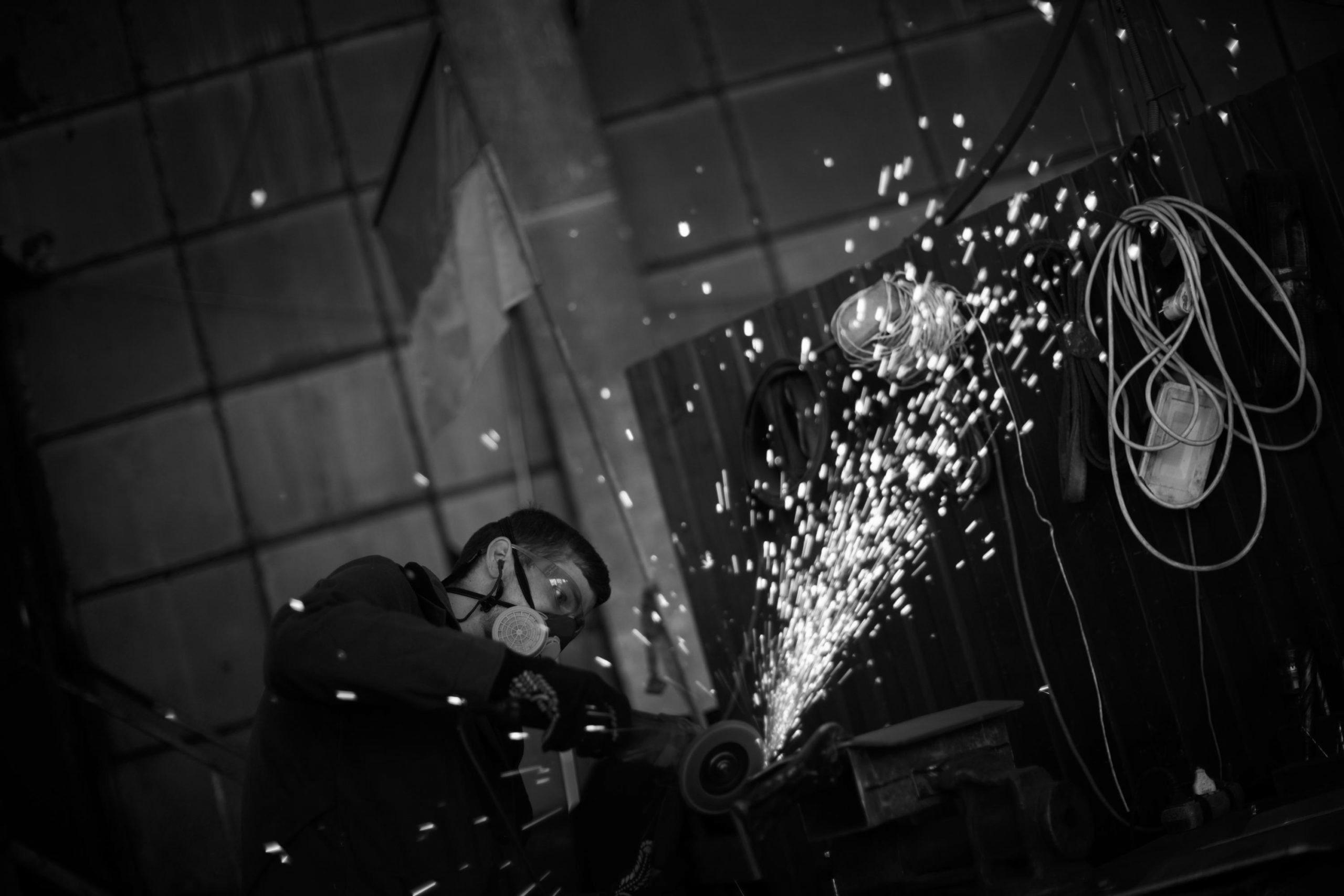Protect the physique: Ukraine volunteers craft armor, camouflage
Warning: Undefined variable $post_id in /home/webpages/lima-city/booktips/wordpress_de-2022-03-17-33f52d/wp-content/themes/fast-press/single.php on line 26

2022-05-09 09:16:18
#Defend #body #Ukraine #volunteers #craft #armor #camouflage
ZAPORIZHZHIA, Ukraine (AP) — Sparks fly as a circular saw slices into steel, while welders nearby work feverishly to the sound of blaring heavy metallic. Upstairs, sewing machines clatter as girls mark patterns on cloth being shaped into bulletproof vests.
An outdated industrial complex in the southeastern Ukrainian riverside metropolis of Zaporizhzhia has develop into a hive of activity for volunteers producing everything from physique armor and anti-tank obstacles to camouflage nets, portable heating stoves and rifle slings for Ukrainian troopers combating Russia’s invasion. One part makes a speciality of autos, armor-plating some, changing others into ambulances. One other organizes food and medical deliveries.
With the entrance line about 50 kilometers (30 miles) from the city, some sections of the operation, such because the stitching of bulletproof vests, are working across the clock in shifts to satisfy demand. Crowdfunding has introduced in enough cash to buy steel from Sweden, Finland and Belgium, which is lighter than local steel, organizers say, a vital quality for physique armor.
The operation is the brainchild of native celebrity Vasyl Busharov and his friend Hennadii Vovchenko, who ran a furniture-making business. They named it Palianytsia, a sort of Ukrainian bread whose name many Ukrainians say can't be pronounced correctly by Russians.
The operation relies entirely on volunteers, who now number greater than 400 and are available from all walks of life, from tailors to craftsmen to attorneys. Apart from those involved in production, there are also drivers delivering humanitarian assist and medical gear bought by donated funds.
“I feel I am needed here,” mentioned fashion designer Olena Grekova, 52, taking a short break from marking cloth for vests.
When Russia invaded on Feb. 24, she was in Thailand seeking inspiration for her spring assortment. Initially, she mentioned, she questioned whether it was an indication from God that she shouldn’t return. Her husband and two grownup sons urged her to not.
“However I decided that I had to return,” she stated.
She had known Busharov for years. Arriving home on March 3, she gathered her equipment the next day and by March 5 was at Palianytsia. She’s been working there day-after-day since, bar one, typically even at night.
Shifting from designing backless ballgowns to creating practical bulletproof vests was “a new experience for me,” Grekova stated. However she sought feedback from soldiers for her designs, which have armor plates added. Now she helps to supply several variations, together with a prototype summer season vest.
In another section of the commercial advanced, 55-year-old Ihor Prytula was busy making a brand new camouflage internet, winding items of dyed cloth via a string body. A furniture-maker by commerce, he joined Palianytsia firstly of the conflict. He had some army expertise, he stated, so it was straightforward to get suggestions from troopers on what they needed.
“We converse the same language,” he said.
For Prytula, the war is private. His 27-year-old son was killed in late March as he helped evacuate folks from the northern town of Chernihiv.
“The battle and death, it’s bad, trust me, I do know this,” he stated. “It’s dangerous, it’s tears, it’s sorrow.”
The decision for volunteers went out as soon because the conflict began. Busharov announced his venture on Facebook on Feb. 25. The subsequent day, 50 individuals turned up. “Next day 150 individuals, next day 300 people. ... And all collectively, we strive (to) shield our city.”
They started out making Molovov cocktails in case Russian soldiers superior on Zaporizhzhia. In 10 days, they produced 14,000, he stated. Then they turned to producing anti-tank obstacles referred to as hedgehogs — three massive metal beams soldered collectively at angles — used as part of the city’s defenses. Soon, Busharov and Vovchenko said, they found one other urgent need: there weren’t enough bulletproof vests for Ukraine’s soldiers.
But learning easy methods to make something so specialised wasn’t straightforward.
“I wasn’t actually connected with the military at all,” stated Vovchenko. “It took two days and three sleepless nights to understand what needs to be performed.”
The staff went via numerous forms of metal, making plates and testing them to test bullet penetration. Some didn’t provide enough safety, others had been too heavy to be useful. Then they'd a breakthrough.
“It seems that steel used for automobile suspension has superb properties for bullet penetration,” Vovchenko stated, standing in entrance of four cabinets of take a look at plates with varying levels of bullet injury. The one made of car suspension metal confirmed dozens of bullet marks but none that penetrated.
The vests and everything else made at Palianytsia are supplied free to troopers who request them, so long as they can prove they're within the army. Each plate is numbered and each vest has a label noting it's not on the market.
Thus far, Palianytsia has produced 1,800 bulletproof vests in two months, Busharov stated, adding there was a waiting listing of around 2,000 extra from all over Ukraine.
Vovchenko said they have heard about as much as 300 individuals whose lives have been saved by the vests.
Realizing that is “extremely inspiring and it keeps us going,” he said.
____
Inna Varenytsia in Zaporizhzhia, Ukraine, contributed.
___
Observe all AP stories on the conflict in Ukraine at https://apnews.com/hub/russia-ukraine
Quelle: apnews.com